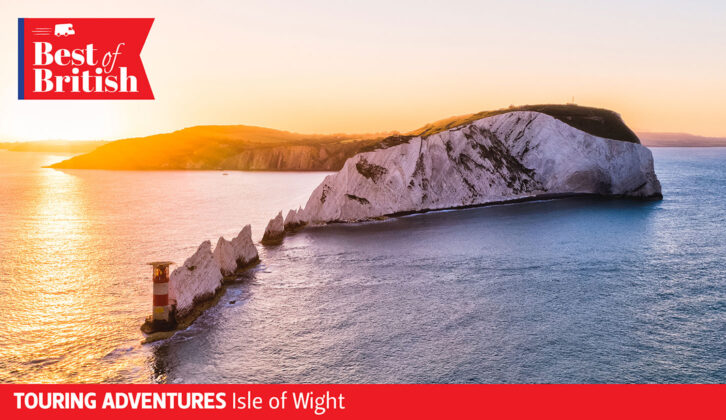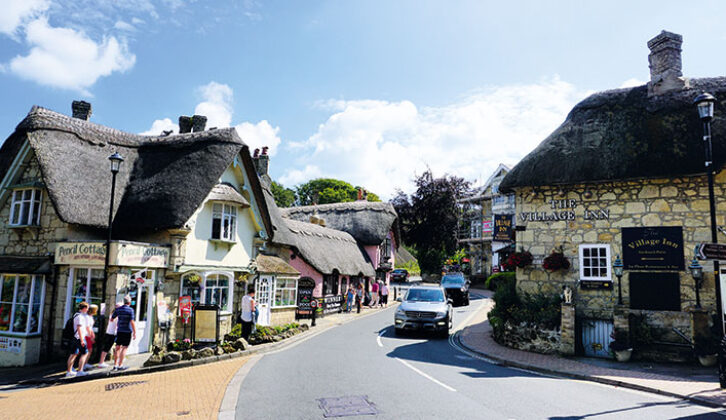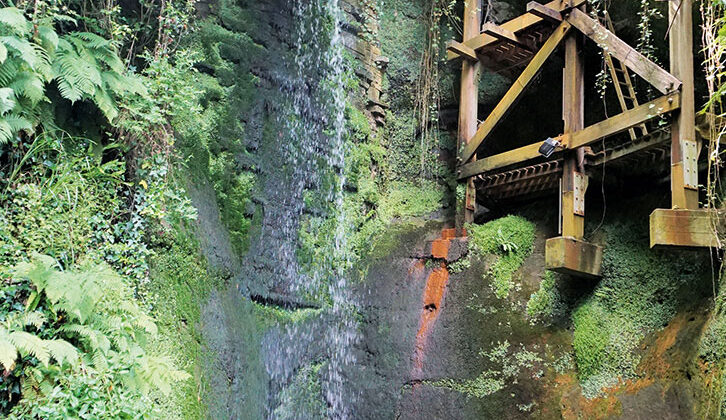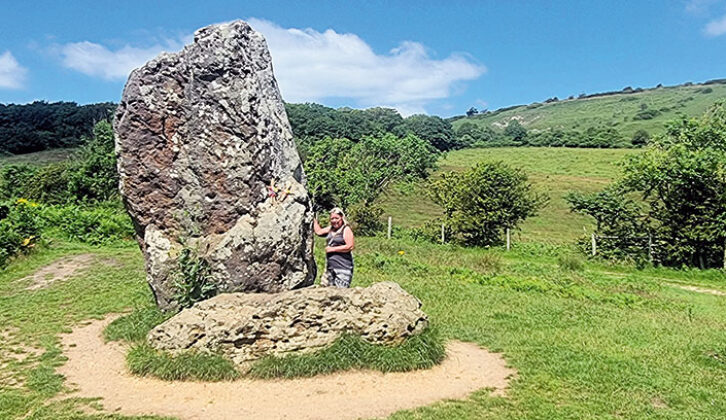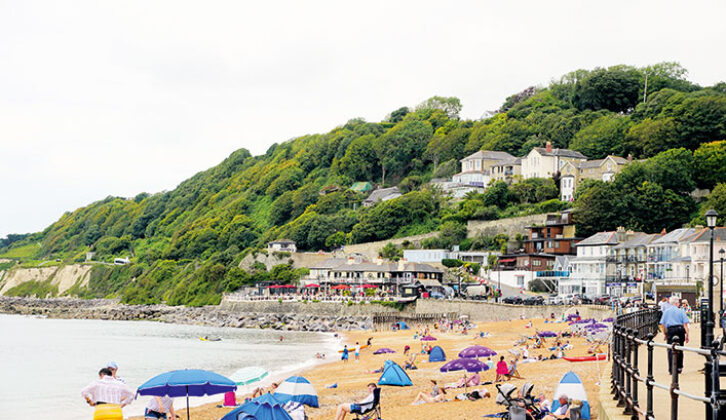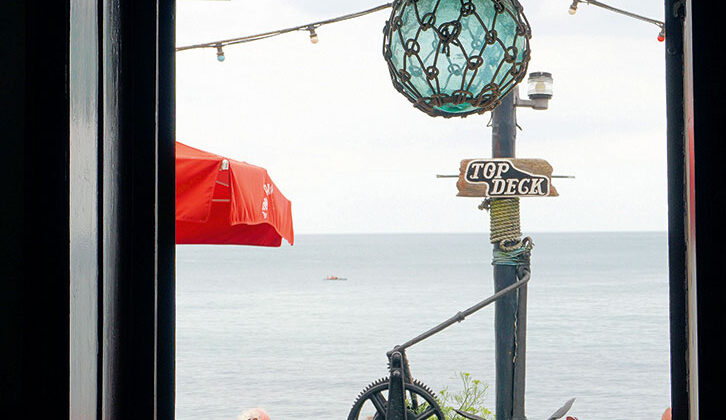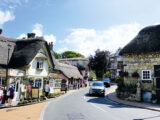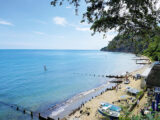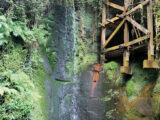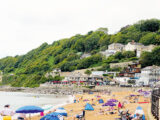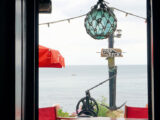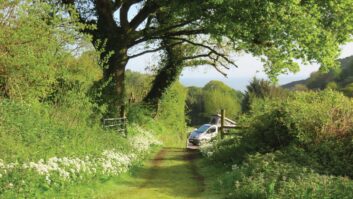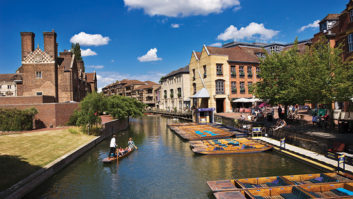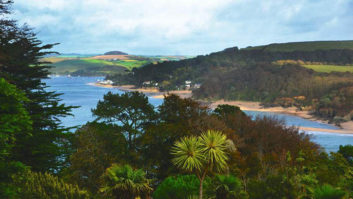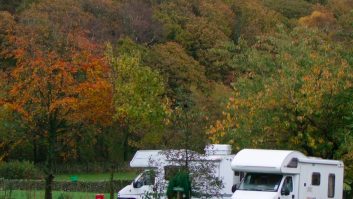Tapping me on the shoulder as he set off along the boardwalk, Ro called, “Race you to the end!” and was very soon several paces ahead of me. There’s something about a seaside pier that brings out the inner child in us all and I couldn’t help but chase after him, laughing breathlessly as I failed to catch up before he reached the end of the pier – and the Channel.
At 870ft, Sandown’s pier might not be the longest in the world, but it’s quite long enough for an out-of-shape runner like me – I bet the Victorian ladies who came here to promenade and enjoy the sea air were far more decorous!
Practical Motorhome is supported by its audience. When you purchase through links on our site, we may earn an affiliate commission. Learn more.
A trip to Sandown
They started arriving as soon as the pier opened, in 1879, enjoying its pavilion, and paddleboat trips taken from the landing stage. The island soon became so popular that no fewer than four European monarchs stayed here.
In 2021, we found ourselves following in their footsteps and enjoying some good old-fashioned English seaside entertainment.
Sandown is on the southern coast of the Isle of Wight, with long stretches of beach (winning BBC Countryfile Beach of the Year in 2019) just perfect for sandcastle construction, a traditional promenade, and of course, that rather fine pier.
Adgestone Camping and Caravanning Club Site, an easy 30-minute stroll from the beach, was our base for the week. There are a couple of other seaside campsites nearby, including a Parkdean resort with all the facilities you could wish for, again around a 30-minute walk away.
But back to our afternoon in Sandown, and after all of that exercise on the pier, we treated ourselves to ice cream, sank into a couple of deckchairs and took in the fine view over the Solent. Looking left past the pier, the panorama opens out to the cliffs of Shanklin, and we quickly decided that walking there would make an excellent day out later in the week.
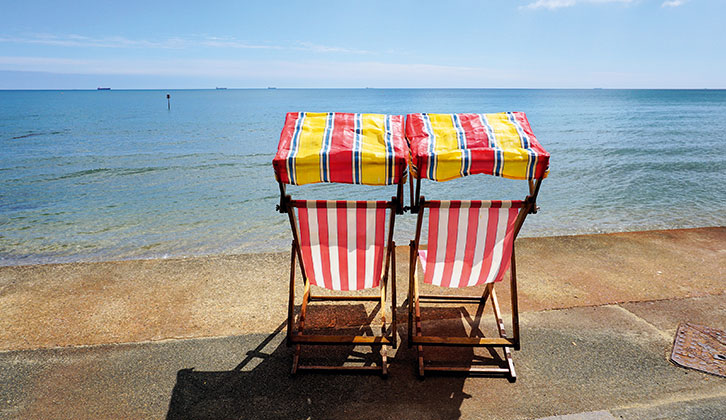
Today, though, ice creams devoured, we took a relaxing stroll along the beach, past the Dinosaur Isle museum, which organises guided fossil-hunting sessions (the Isle of Wight has one of the highest concentrations of dinosaur fossils in the world), and onwards to Yaverland.
The sea here is hugely popular with watersports enthusiasts – but my earlier run was quite enough activity for one day! We ended our day with a meal at Sandown Boulevard, a quirky little bar on the beach which also hosts several excellent pop-up street food vendors.
The following morning found us on the road in search of more history. Carisbrooke Castle, in the heart of the island, dates all the way back to the 12th century, although a fortification has stood here since at least the time of Edward the Confessor, 100 years earlier.
Since then, this imposing structure has served as a garrison, a royal residence and even a prison – Charles I was jailed here in 1648 and today, you can see the bed that he slept in.
I wouldn’t recommend emulating his attempt to escape by climbing out of the window, mind you – he got himself stuck between the bars and had to be rescued by his guards!
Royal connections
Beatrice, Victoria’s youngest child, became Governor of the Isle of Wight in 1896, and lived in Carisbrooke until her death in 1944, when the castle was acquired by English Heritage. Her design influence can still be seen, in the wall panelling, the window seats, and the bathroom that she added to ‘modernise’ the castle, among other improvements.
We walked the circuit of the walls, admiring far-reaching views over the countryside, before snacking on tea and cake from the café.
Then there was just time to visit the famous castle donkeys, who put on daily demonstrations working the treadwheel (but have a much happier life, I suspect, than their 16th-century ancestors). We had also spotted a craft centre and farm shop on our way to the castle and were keen to visit on the journey back, mainly to pick up some supplies for our planned evening barbecue (check out our best motorhome barbecue guide if you’re on the lookout for one).
Arreton Barns Craft Village also has a Shipwreck Centre & Maritime Museum, as well as a pub, the Dairyman’s Daughter, if you fancy somewhere to enjoy a pleasant pit-stop.
We contented ourselves with ambling around the bustling shops and watching some of the artisans at work, before making a quick visit to the fine old parish church, St George’s, and then returning to the campsite with our goodies to cook up that barbecue in the evening sunshine.
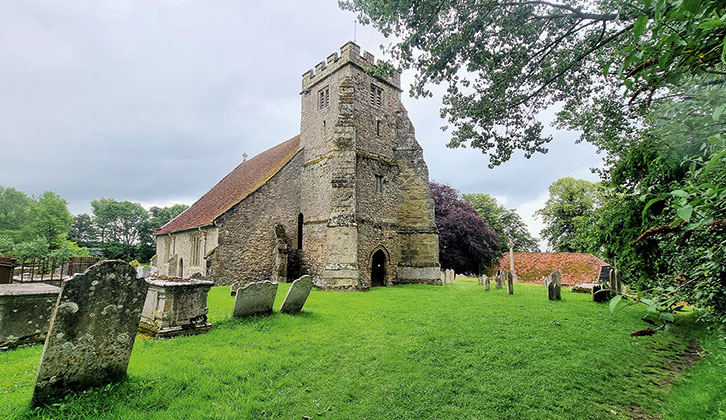
Stepping further back in time the next day, we found ourselves at the site of a Neolithic burial chamber near Mottistone, on the island’s south-western coastline.
An easy uphill walk through woodland, which gave way to heather and gorse, took us to two standing stones, once marking an ancient burial ground. As with all such places, there is a legend surrounding these stones.
Legendary stones
It seems that St Catherine had a wager with the devil for control of the island, which involved throwing some huge boulders. Her larger stone won out against his smaller effort and remained as a symbol of the triumph of good over evil.
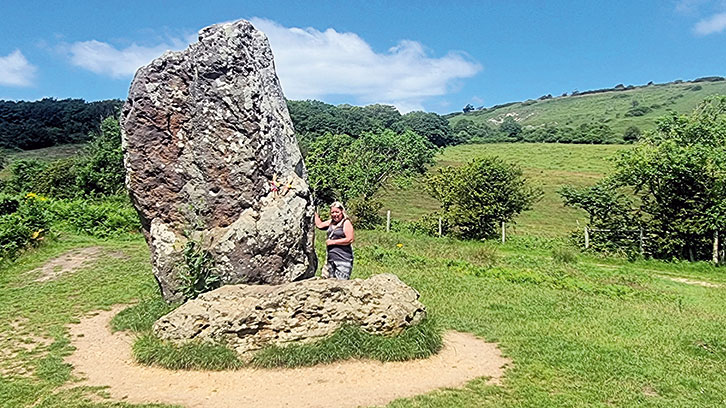
I couldn’t resist resting my hands on said stones, but alas, no bolts of wisdom or flashes of insight were to be had.
There is a walk (or a five-minute drive) from here to the National Trust’s Mottistone Gardens, but we were keen to continue along the coast, past Blackgang Chine, the oldest amusement park in the UK, to one of the highest points on the island.
Here you can see St Catherine’s Oratory, known locally as the Pepperpot. From the car park, it is a relatively short (but steep) climb up the grassy hillside to reach the structure, but the views are well worth it. The Pepperpot was built in 1328 by a local landowner, as penance for stealing wine from a ship that ran aground at Chale Bay on its way to a French monastery.
It was intended as a lighthouse and an oratory, where a local priest could pray for the souls of those lost at sea. Today, the building is a shell, but on a clear day, you have a panoramic view of the southern coast of the Isle of Wight and over to the South Downs on the mainland.
Having walked up a good appetite, we were soon back at the campsite, tucking into another barbecue – you really do have to make the most of the sunny days in Britain!
Beach and esplanade
Waking bright and early next morning, we took a bus ride around part of the island, starting at the traditional seaside town of Ventnor. It has a sand and shingle beach, which is ideal for entertaining the little ones, or for just relaxing.
Those Victorian visitors came here in their droves, travelling by steam packet from the mainland, to experience the mild, health-giving climate.
After a short stroll along the sea wall towards the village of Bonchurch, we enjoyed lunch on the beach at the lively Spyglass Inn, before hopping on another bus for the 30-minute journey to the bustling seaside resort of Ryde.
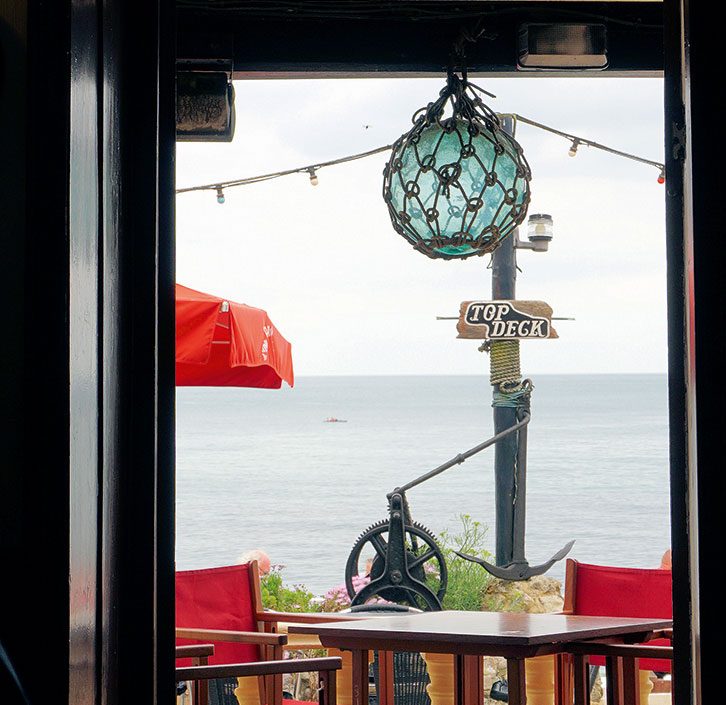
Here, there is another pier to walk along (and yes, I did just walk this one – after all, it is about three times longer than Sandown Pier!), more fine Victorian architecture and miles of gorgeous sandy beach. There is also a rather eclectic mix of shops to explore – even an all-year-round Christmas shop – as well as enticing cafés.
Having already eaten in Ventnor, we resisted their temptations, although we did indulge in an excellent cocktail at the Pavilion Bar & Grill, on the lively esplanade – having the perfect excuse of needing to kill some time before our bus back.
With more sunshine greeting us next morning, we decided to continue in the footsteps of our Victorian friends and walk to Shanklin and its chine. This turned out to be an easy 1.5-mile stroll along the esplanade, or on the sands, passing beach huts and cafés if you fancy simply sitting and watching the world go by. Later on, we dined al fresco at the Waterfront Inn before exploring the rest of Shanklin. From the beach, it is quite a steep climb to the Old Village. We chose the easier, more interesting, route via the Chine.
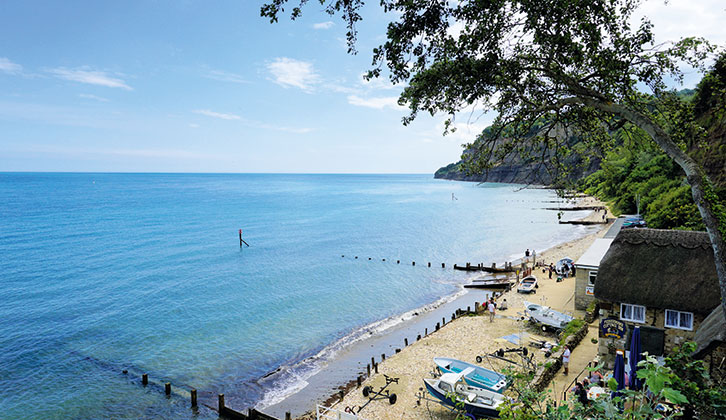
The island’s oldest tourist attraction, Shanklin Chine is a natural ravine and waterfall carved out over thousands of years. Today’s stunning tree-lined path was excavated in 1817 and soon found its way onto every Victorian’s bucket list.
Slightly less salubriously, it was also a handy route for smugglers, offering them passage by a tunnel up to the Old Village. More recent history saw Royal Marine Commandos training here for D-Day during World War II.
The area is also home to a great variety of wildlife, including red squirrels (a live webcam on their feeder can be viewed at the nature hide), foxes and many species of birds.
As night falls, the Chine becomes even more spectacular, with illuminated streams, pathways and waterfalls from May to October.
We had a restaurant booked for dinner, so we couldn’t stay to experience this. Instead, at the Old Village, after more exploring, we found a bus service to Sandown, to save our weary feet.
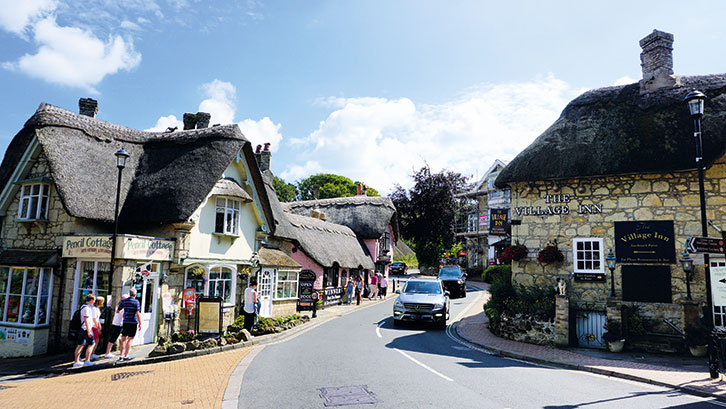
Gin at the inn
That evening, a five-minute taxi ride took us to The Yarbridge Inn for a good dinner. Chatting to our waiter – a member of the family that owns the pub – we learned that the building has an interesting history, and was once a train station.
I for one heartily approve of today’s incarnation, especially as they serve the local Mermaid Gin!
After a busy few days, we decided that our final day would be spent enjoying quiet relaxation in the fresh air – those Victorians really were onto something, you know.
Stretched in a deckchair on the beach, sun on my face, anticipating fish and chips and maybe a glass of something cold, I felt a gentle nudge. I found Ro looking at me with an eyebrow raised. “Rematch race on the pier?” Not on your life!
When to go to the Isle of Wight
When we visited during summer 2021, this very popular destination was bustling with visitors, but the shoulder seasons are lovely here, too, and would be less crowded.
Way to go to the Isle of Wight
We took the Portsmouth to Fishbourne ferry crossing.
Where we stayed in the Isle of Wight
Adgestone Camping and Caravanning Club Site
Lower Road, Brading, Sandown PO36 0HL
Food and drink in the Isle of Wight
- Sandown Boulevard
- The Spyglass Inn
- Pavilion Bar & Grill
- Waterfront Inn
- The Yarbridge Inn
- The Isle of Wight Distillery
Find out more
Information on towns, villages and attractions.
- Southern Vectis bus services
- Carisbrooke Castle
- Arreton Barns
- Mottistone Gardens
- St Catherine’s Oratory
Lead image: Getty Images
Head to our Best of British: Touring Adventures category to find more great travel ideas and inspiration.
If you’ve enjoyed reading this, why not get the latest news, reviews and features delivered direct to your door or inbox every month. Take advantage of our brilliant Practical Motorhome magazine SUBSCRIBERS’ OFFER and SIGN UP TO OUR NEWSLETTER for regular weekly updates on all things motorhome related
